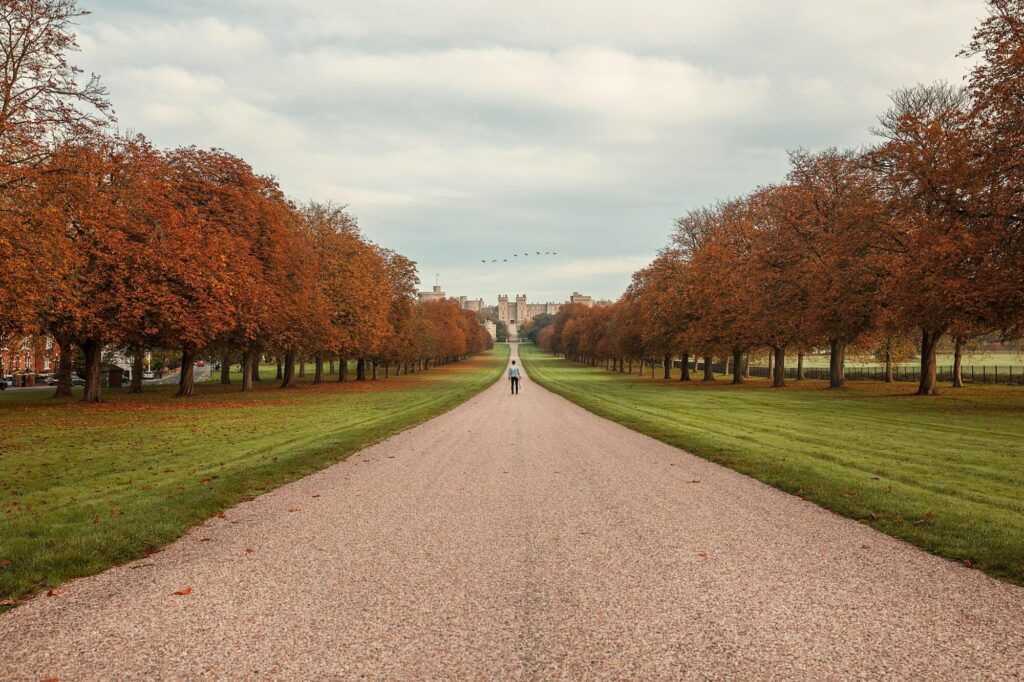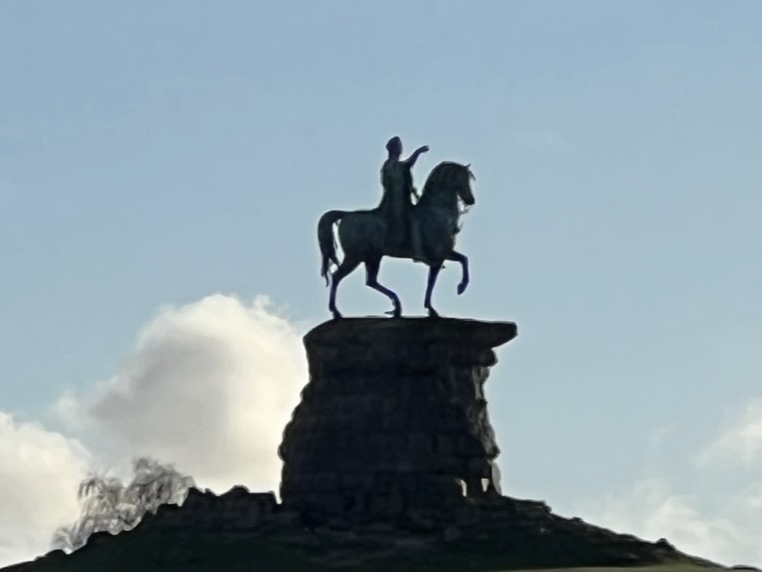The Long Walk stretches nearly three miles through Windsor Great Park, leading from the George IV Gateway of the castle to the Copper Horse statue atop Snow Hill. The Long Walk is a journey through centuries of tradition, royalty, and architectural splendor.
Origins
The area surrounding Windsor Castle has been inhabited since ancient times. Evidence of human settlement dates back to the Neolithic period. Archaeological excavations have revealed that the site may have been used by the Romans for military or agricultural purposes.
It was during the medieval period that Windsor Castle became a significant royal residence. King Henry VIII played a pivotal role in shaping the landscape of Windsor. It was under his reign that the castle underwent extensive renovations, and the surrounding parkland was developed into a royal hunting ground.
The concept of the Long Walk, as a grand avenue leading away from the castle, began to take shape during the reign of King Charles II in the late 17th century. Inspired by the formal gardens of continental Europe, Charles II sought to transform the grounds surrounding Windsor Castle into a royal park. He envisioned the Long Walk as a ceremonial route. It created a visual axis that emphasized the majesty of the castle and provided a scenic vista for the castle.
The initial stretch of the Long Walk was laid out by the celebrated landscape architect André Le Nôtre. Le Notre is famed for his work at the Palace of Versailles. Le Nôtre’s design principles were characterized by straight lines, carefully manicured lawns, and symmetrical arrangements of trees.

Royal Connections
The Long Walk has served as both a ceremonial route and a place of leisure. King George III. Enamored with the natural beauty of Windsor Great Park, he frequently strolled the Long Walk with his family. Queen Victoria, too, was fond of the Long Walk, often taking carriage rides on it.
One of the most iconic features along the Long Walk is the Copper Horse statue on Snow Hill. Commissioned by King George III and completed in 1831, the statue depicts the monarch astride a horse, symbolizing his reign and connection to Windsor. The Copper Horse remains a prominent landmark. Snow Hill offers panoramic views of the surrounding countryside.
Ancient Trees and Folklore
Amidst the grandeur of the Long Walk, ancient trees witness centuries of history. Some, such as the iconic oak trees that line the avenue, are over 1,000 years old. These ancient trees are intertwined with legend, inspiring tales of faeries, spirits, and mystical encounters.
According to folklore, certain trees along the Long Walk are said to possess magical properties. They offer protection to those who seek shelter beneath their boughs. Tales of ghostly apparitions such as that of Herne the Huntsman, have been passed down through generations.
Cultural Significance of the Long Walk
Beyond its royal associations, the Long Walk holds immense cultural significance, serving as a backdrop for historic events and celebrations. In 1945, following the end of World War II, the Long Walk was the setting for the Victory Parade.
Royal Weddings and Funerals
The Long Walk has hosted numerous royal events. In May 2018, the Long Walk became the site of Prince Harry and Meghan Markle’s wedding carriage procession, following their ceremony at St. George’s Chapel.
In April 2022, the Long Walk took the late Queen Elizabeth II to her final resting place. The Queen’s casket was brought from London to Windsor Castle, where it lay in state before being transported along the Long Walk to St. George’s Chapel for the funeral service. The procession was a tribute to the longest-reigning monarch in British history, with thousands of mourners lining the route to pay their respects.
Preservation and Restoration of the Long Walk
Over the centuries, the Long Walk has undergone numerous changes and renovations. These reflect shifting tastes in landscape design and the need for conservation. In the late 19th century, during Queen Victoria’s reign, extensive replanting of horse chestnut trees were undertaken along the Long Walk. Ensuring the preservation of its majestic tree-lined avenue continues to this day.
The Crown Estate, which manages Windsor Great Park, has prioritized the conservation of this historic landscape. Heritage organizations and local stakeholders safeguard its cultural and natural heritage.
Today, his majesty, King Charles serves as ranger of the Great Park, a position he assumed after the passing of his father, Prince Phillip.

The Long Walk is more than a path—it is a journey through British history. Whether tracing the footsteps of kings and queens, marveling at the age-old trees that line its avenue, or contemplating the majesty of Windsor Castle in the distance, the Long Walk continues to captivate the imagination and inspire awe in all who behold its grandeur. It’s a “Must see” on your trip to Windsor.

